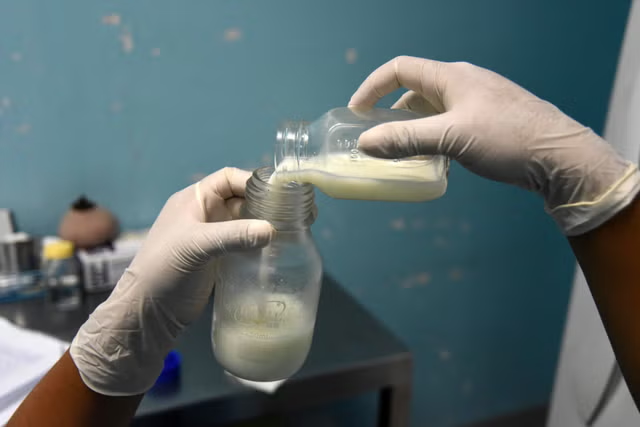Despite the common belief that pain, pressure and incontinence are normal after childbirth, scientists are warning women that these symptoms actually indicate treatable pelvic floor issues.
A survey conducted by Ipsos found that 71 percent of Americans agree it's normal for women to suffer with bladder incontinence after having kids, and more than half believe it's normal for women to experience pain during sex after they've recovered from childbirth.
Occupational health specialists at Orlando Health, Florida, are working to dispel the myth that these side effects are a natural part of post-partum life.
"When we say it's not normal, what we mean is it's not something you should have to live with. It's something you can rehabilitate and improve," said Tessa Ladd, occupational therapist at the organization. "Childbirth puts a lot of trauma on the body, but just like with any other injury, muscles and tissues should have the ability to recover and support the internal organs."
The pelvic floor consists of muscles and ligaments that serve as a "hammock" to support the bladder, uterus, rectum and vagina. Damage to these structures, frequently caused by pregnancy, childbirth or aging, can result in prolapse, where the organs slip out of their normal positions.
A month after having her second child, Nicole Gerardi-Lukens felt incapacitating pressure in her pelvis and went to the hospital. She was diagnosed with pelvic floor prolapse and recommended a series of core strengthening sessions.
"We laugh about it—'I did a jumping jack and sure, I had leakage!"—you can fix that, or you can work to fix that as much as possible," she said.
With the help of Ladd's expertise, she started a program to get her muscles back to the strength they needed to support her and prevent future discomfort.
"I was so relieved when I was referred to a pelvic floor therapist," Gerardi-Lukens said. "Tessa taught me things like how to breathe when I pick things up, and it made me realize how much pressure I was putting on my pelvic floor with everyday tasks. I didn't always notice how much of that pressure I was feeling until I learned how to relieve it and could really feel the difference."
One in three women in the U.S. will be diagnosed with a pelvic floor disorder at some point in their lives. Many of them will consider it a natural symptom of pregnancy, or aging, and contrary to what the population thinks, it doesn't have to be.
"If we have a problem with our knee, we could talk to anyone about it without shame, without feeling uncomfortable or weird about it," Ladd said. "Everyone has pelvic floor muscles, yet it's something many women shy away from talking about, even with medical providers.
"When we open up about the symptoms we're struggling with and understand that so many of us have this shared experience, we can help women live their lives free from pain and symptoms caused by these common and treatable issues."
Is there a health problem that's worrying you? Let us know via health@newsweek.com. We can ask experts for advice, and your story could be featured in Newsweek.
Disclaimer: The copyright of this article belongs to the original author. Reposting this article is solely for the purpose of information dissemination and does not constitute any investment advice. If there is any infringement, please contact us immediately. We will make corrections or deletions as necessary. Thank you.



